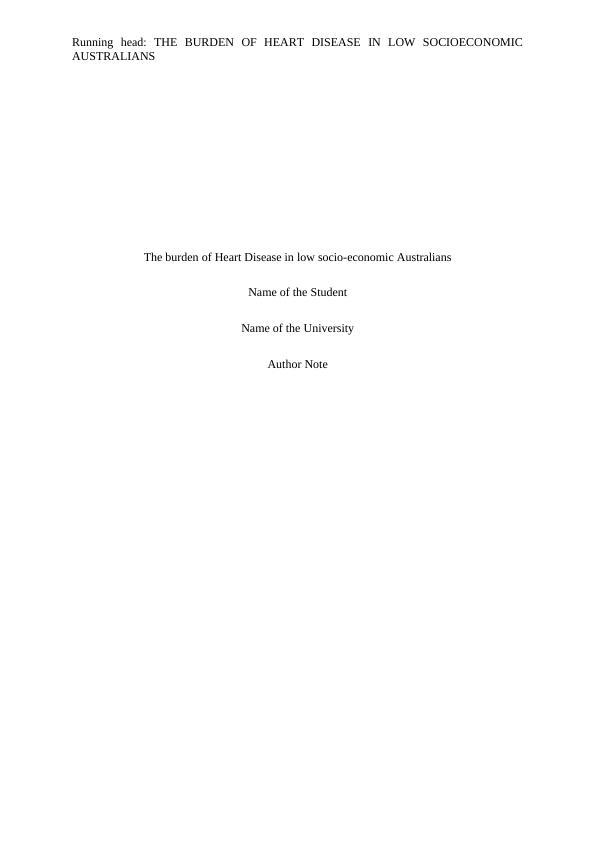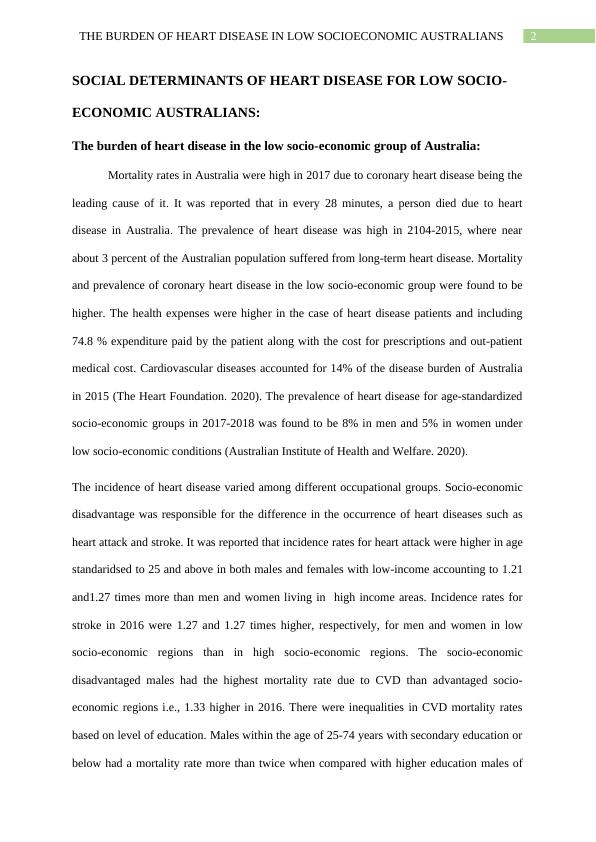The Burden of Heart Disease in Low Socioeconomic Australians
Addressing social determinants of cardiovascular health among older Australians and proposing a public health intervention to encourage physical activity in rural populations.
10 Pages2020 Words170 Views
Added on 2023-04-04
About This Document
This paper discusses the burden of heart disease in low-income regions of Australia and the social determinants of health that contribute to it. It also explores government strategies and public health interventions to prevent heart disease in this population.
The Burden of Heart Disease in Low Socioeconomic Australians
Addressing social determinants of cardiovascular health among older Australians and proposing a public health intervention to encourage physical activity in rural populations.
Added on 2023-04-04
ShareRelated Documents
End of preview
Want to access all the pages? Upload your documents or become a member.
Social Determinants of Risk and Outcomes for Cardiovascular
|11
|2699
|15
The Social Determinants of Health in Australia
|7
|1393
|18
The Burden of Heart Disease in Lower Socioeconomic Status Populations
|7
|1074
|89
Social Determinants of Health
|7
|1220
|297
Social Health Determinants of Cardiovascular Diseases in Rural and Remote Australia
|9
|2459
|333
Assignment On Health Disparities Of Aboriginal Report
|12
|2760
|16



